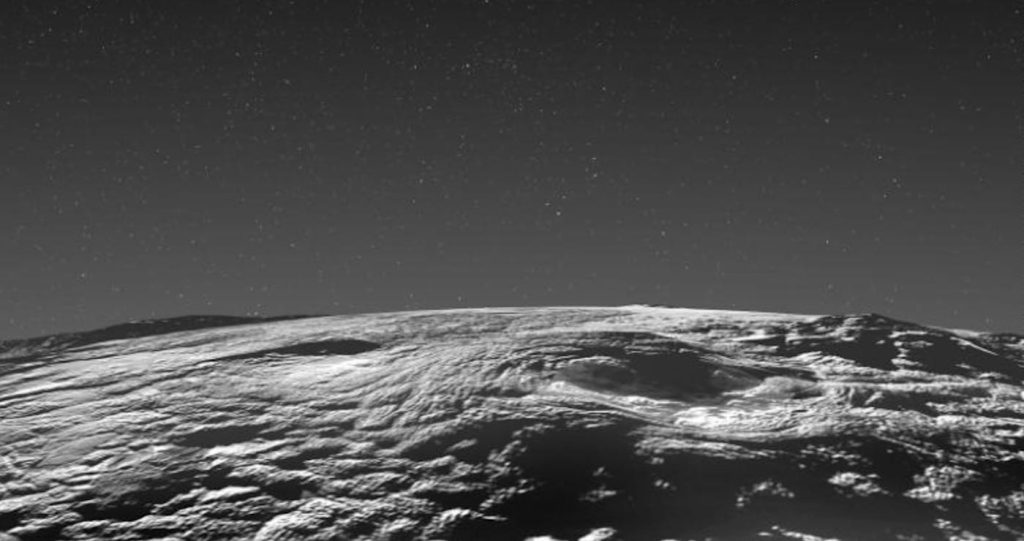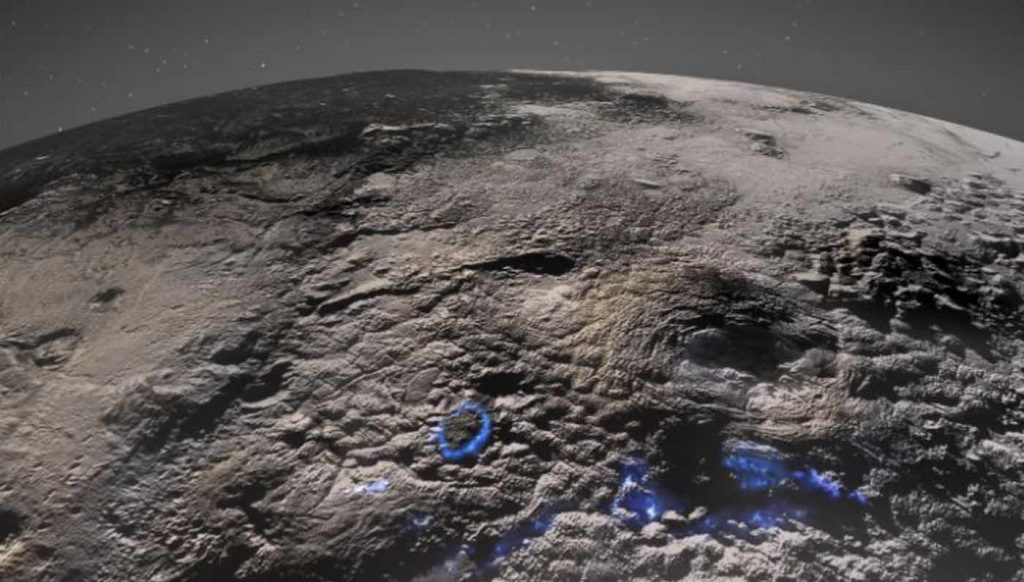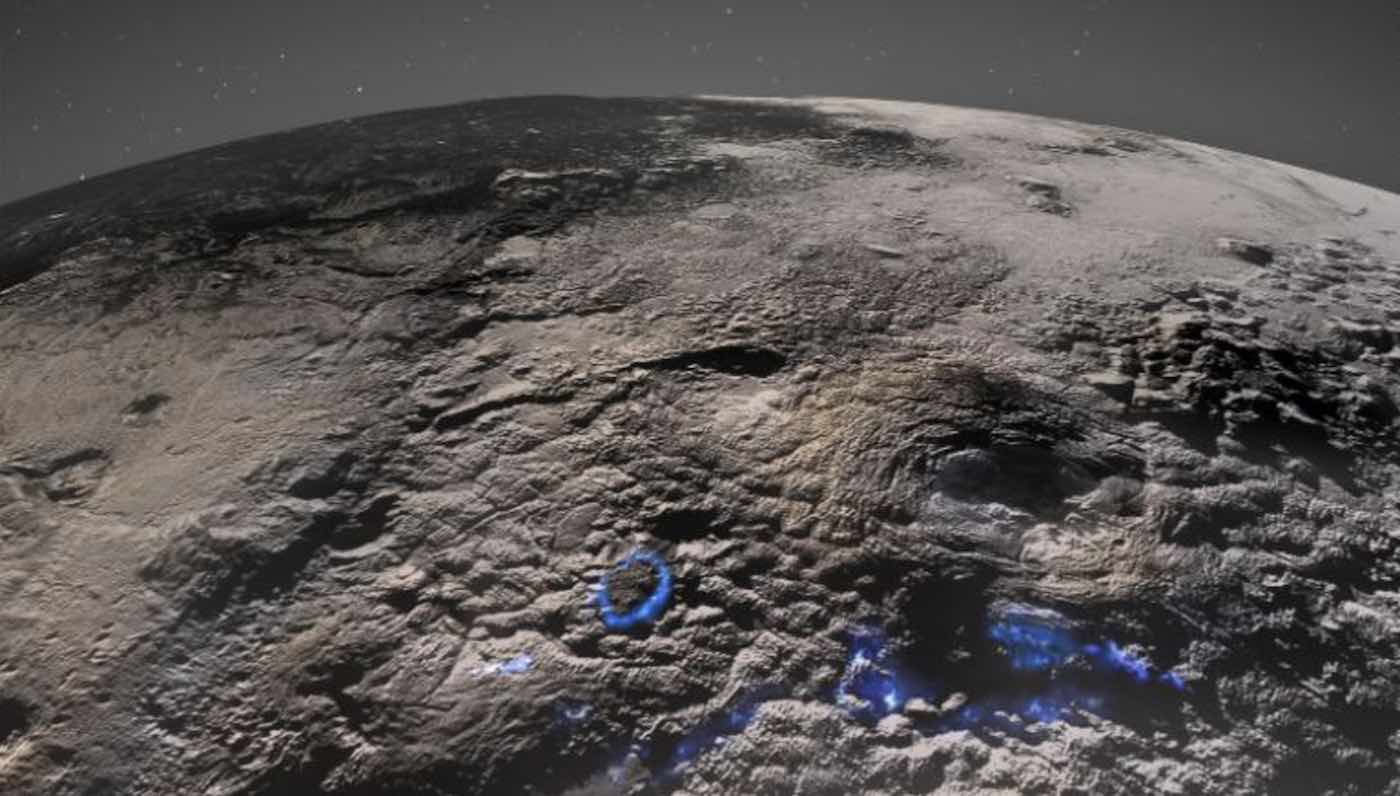
As spacecraft New Horizons recently sauntered past Pluto, images sent back to Earth made their way into the hands of a team that confirmed a large part of the dwarf planet’s surface was molded by ice volcanos—and some eruptions are fairly recent on the cosmos calendar.
The findings provide much more detailed evidence about volcanoes on Pluto, and suggest that with all the ice contained there, heat from the planet’s core could maintain a subsurface ocean, a feature known to exist on other planets.
The idea conjures images from mythology or fantasy fiction: a frozen world where volcanoes belch liquid nitrogen and ice, and where underground, close to the pressures and heat of the world’s heart, a vast ocean lies in total darkness. Ce la space.
Ice volcanoes are known from other worlds like Enceladus, the ice-moon of Jupiter, but not like this.
180 miles of Pluto’s surface is ice formed from H20, under which could be a liquid water ocean, according to some existing models in which such a scenario is possible. Back on the surface, nitrogen ice sits at a temperature much closer to its melting point, even in the frigidity of Plutonian weather.
In these conditions, scientists looking at the pictures from New Horizon posit that an area of “hummocky” texture and large rises and mounds located southwest of the famous Sputnik Planitia nitrogen ice sheet was formed by volcanoes.
RELATED: Mysterious Purple Coating Found on Mars Rocks in Every Direction

Central in this area are two volcanoes known as Wright Mons, which climbs 13,123 to 16,404 feet, and Piccard Mons, bigger than any land volcano on Earth, at about feet 22,965 feet. The two span an area more than 200 miles wide.
Cryo-volcanoes work exactly like hot ones here on Earth, where heat and pressure force subsurface material, in this case H20 ice, up to the surface to reshape the terrain. In this case it’s almost exclusively water ice, since the freezing points of nitrogen, methane, or ammonia, other chemicals present on Wright and Piccard Mons, are much lower than normal water and can only be achieved on the surface. Below ground they would certainly melt.
Considering those low temperatures, what would a Wright Mons eruption look like? “A viscous flow of either slushy or solid-state but still mobile material,” write the authors in their paper.
They also note that the unique topography of the region is free of any large impact craters, suggesting a much more recent geological period created these mountains, perhaps 100-200 million years ago.
All things considered, that would mean that subsurface liquid water—an ocean—could still be there today.
LOOK: This is What it Looks Like When a Black Hole Snacks on a Star
And, any planet with liquid water has the potential to host life, like a liquid water ocean present on our world was the place where life first began.
ORBIT These Icy Pics For Pluto Fans on Social Media…




















